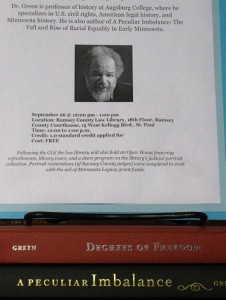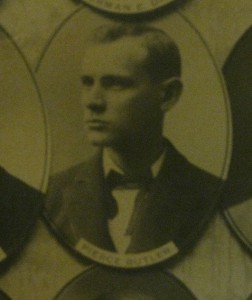Now that Brendan Dassey’s murder conviction has been overturned, it is timely that another overturned murder conviction comes into the news. This one, however, will not and indeed cannot end as Dassey’s apparently has. The 1944 case of George Stinney is not well-known, probably overshadowed by headlines of the war at the time. It started when fourteen-year-old George was herding his family’s milk cow in rural part of South Carolina, when two white girls happened by and asked young George about local flower picking possibilities. When the girls went missing, George joined the search party and revealed that he had seen them the previous day. As soon as the girls’ murdered remains were found, George went on record as being the last to see them alive. So when George’s parents were away from home that day, officials came and took away George and his brother. (His frightened sister watched from a chicken coop she was hiding in.) The officials whisked George into an interrogation, and emerged one hour later claiming that he had confessed to the murders. George was immediately transported to Columbia, SC where he was executed. The details of his electrocution are heart-wrenching, as he weighed only 95 pounds and was too small for the electric chair accessories. Stinney’s entire legal proceedings transpired over only 83 days. Though Stinney’s conviction was overturned in 2014 on grounds that his confession was false and coerced, his case is emblematic of the skewed justice that was typically experienced by black Americans in the Jim Crow South. Last week we learned that lawyers are currently planning to file a civil rights lawsuit on behalf of Stinney’s surviving family.
Think hurried executions following convictions based on unsupported evidence could never happen in our fair community? One of Minnesota’s earliest executions left many doubts as to the subject’s actual guilt. Ann Bilansky was convicted in 1859 of murdering her husband with arsenic. The evidence brought against her was largely circumstantial, and consisted mostly of testimony from a witness with questionable credibility. Numerous petitions for Bilansky’s commutation were submitted to Governor Ramsey. Even the prosecutor himself wrote the day before her scheduled execution that he had come to experience “grave and serious doubts” about Bilansky’s guilt. Nonetheless her execution was carried out publicly at Cedar and Fifth Streets (now the Central Station of the light rail), with about 100 spectators in attendance. She maintained her innocence until the end, proclaiming that she would find “justice in heaven.” With the 2016 election season cranking up, it’s noteworthy that both the Bilansky and the Stinney judicial proceedings were clouded by various political motives and ambitions of its participants. Her story is a fascinating read you can enjoy over Labor Day weekend.









